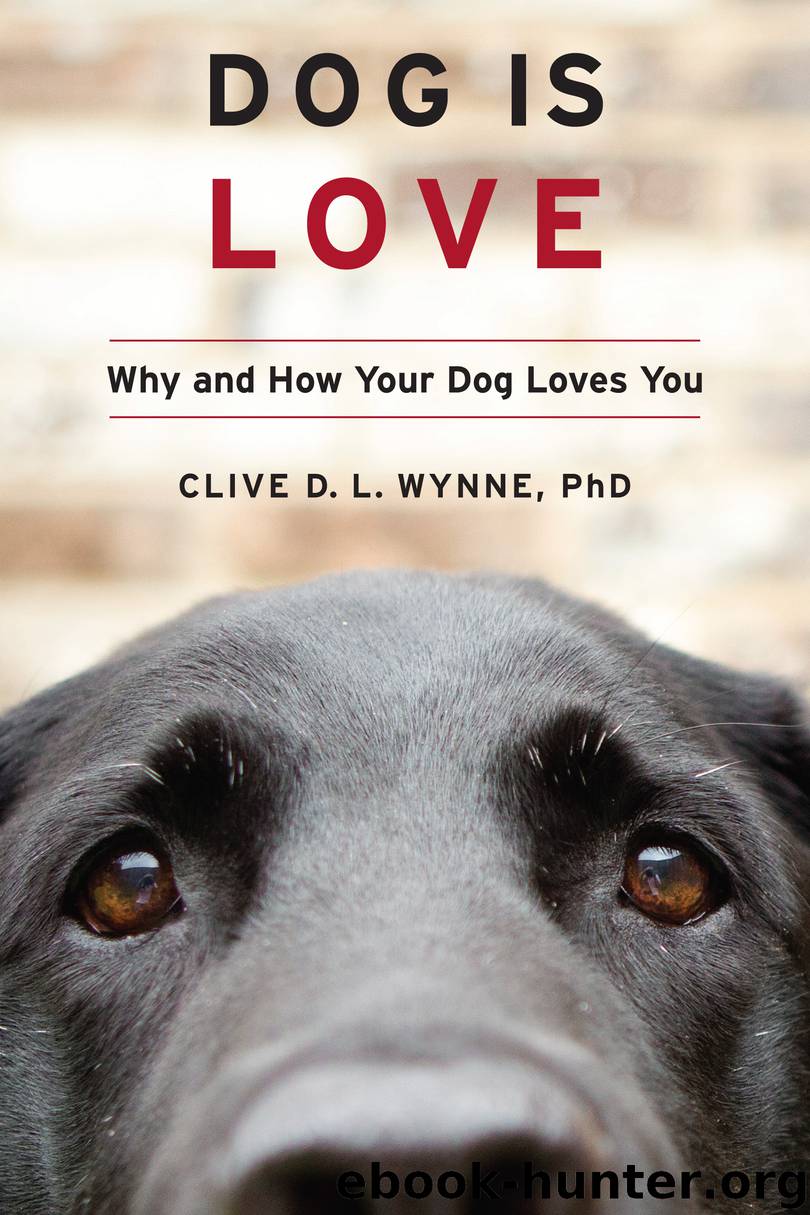Dog Is Love by Clive D.L. Wynne

Author:Clive D.L. Wynne
Language: eng
Format: epub
Publisher: HMH Books
The journey from wolf to dog took place while there were people around watching—but these people must have had other things on their mind, for they left no indication of how this process unfolded. What’s more, the residue that remains leaves a lot of room for guesswork. It is probably precisely because the remnants of dogs’ evolutionary journey are so ambiguous that archeologists and geneticists who are interested in the puzzling origin of dogs are so prone to disagreement about how dogs evolved, and what role humans played in the process.
Luckily, in order to understand how the capacity for love first arose in dogs, we do not need to get hung up on the exact date when dogs came into being. What is crucial is the process by which dogs evolved, and the role that a great capacity for affection would have played in this evolutionary history.
One version of dogs’ origin story—perhaps the most oft-repeated one today—is that dogs arose when our hunter-gatherer ancestors adopted the friendliest wolf pups to help them in the hunt. The eighteenth-century French naturalist Georges Cuvier may have been the first to suggest this model. Over generations, he theorized, selection of the most amiable pups in a litter to be the parents of the next might have gradually created the animal we know today as the dog. This account gains support from the fact that many hunters today find dogs a useful adjunct to their predatory activities; furthermore, some of the earliest representations of dogs show them filling exactly this role.
Ancient dogs’ role as hunting companions for humans probably did play an important part in their evolution. What’s more, as I’ll explain later in this chapter, I believe that dogs’ capacity to love people owes a great deal to our time-tested collaboration as hunters. But an experience I had in Israel has led me to doubt that our hunting ancestors can be credited with creating dogs, per se.
In 2012, the same year that my family adopted Xephos, I made a pilgrimage to Israel. Many people visit the Holy Land to see the birthplace of their religion. I was after something different, but perhaps as primal: the origins of the dog.
I had traveled to Israel to see what I believed, at the time, were the earliest remains of a dog. These were the bones of a puppy buried a little less than twelve thousand years ago, alongside a woman, whose hand rests on the pup’s belly. This archeological find had fed a belief that dogs arose in the Middle East, and naturally I wanted to see these bones for myself.
I also was keen to see the subspecies of wolf that makes its home in the Middle East: the Arab wolf. I knew this wolf was considerably smaller than the great North American wolves I was already familiar with; it is more the size of a large Labrador retriever. I was particularly curious to know whether this wolf subspecies was any easier to tame than the large gray wolves I already knew a bit about.
Download
This site does not store any files on its server. We only index and link to content provided by other sites. Please contact the content providers to delete copyright contents if any and email us, we'll remove relevant links or contents immediately.
| Birds | Cats |
| Dogs | Essays |
| Fish & Aquariums | Food & Nutrition |
| Horses | Insects & Spiders |
| Mice, Hamsters & Guinea Pigs | Pet Loss |
| Rabbits | Reptiles & Amphibians |
Finding Gobi by Dion Leonard(2781)
Grumpy Cat by Grumpy Cat(2687)
A New Earth: Awakening to Your Life's Purpose by Eckhart Tolle(2597)
The Silkworm by Robert Galbraith(2443)
Tippi by Tippi Hedren(2184)
End of Days by Sylvia Browne(2117)
Total Cat Mojo by Jackson Galaxy(1968)
Backyard Chickens Beyond the Basics by Pam Freeman(1905)
The Animals Among Us by John Bradshaw(1831)
The Ultimate Pet Health Guide by Gary Richter(1728)
All Things Bright and Beautiful by James Herriot(1709)
Vet in Harness by James Herriot(1665)
Doggy Desserts: 125 Homemade Treats for Happy, Healthy Dogs by Cheryl Gianfrancesco(1655)
Dog Years by Mark Doty(1643)
Cesar's Way by Cesar Millan(1635)
Chicken Soup for the Ocean Lover's Soul by Jack Canfield(1602)
Dog Training 101 by Kyra Sundance(1559)
Walking with Peety by Eric O'Grey(1555)
Animal Speak by Ted Andrews(1514)
